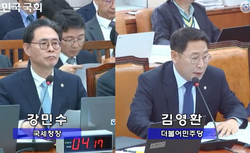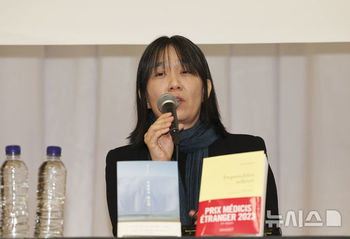 ▲ 윤석열 정부 용산 대통령실 청사 ©뉴시스 |
대통령실이 17일 의대 증원 관련해 "교수 정원·시설 투자 등이 가능하지 않으면서 교육에 부담주지 않고 교육할 수 있는 숫자가 얼마인지 봤을 때 2000명이 가장 안전한 실현 가능 숫자"라고 밝혔다.
대통령실 관계자는 이날 오후 용산 대통령실에서 취재진과 만나 이같이 말한 후 "현장 상황·현실적 가정하면 사실 최소 4000명 이상 증원이 필요한 상황"이라고 기존 입장을 거듭 확인했다.
그러면서 보건사회연구원·한국개발연구원(KDI)·서울대 등 연구와 현 지역·필수의료 현장 인력난·기존 의사 고령화·근로시간 감소 등을 근거로 "오는 2035년 의료 수요 대비 의사 수가 2만 명 넘게 부족해지는데 해소를 위해선 내년부터 의대 정원을 4000명 이상 증원해야 한다"며 "다만 교원·시설 투자 등을 생각해 2000명을 최소 증원 규모로 설정했다"고 전했다.
이어 "2000명을 증원해도 5년 이후부터 굉장한 의사 부족 현상에 시달릴 수 밖에 없는 상황에 처해있다"며 2000명 증원이 '수용 가능 규모'라고 강조했다.
또 지난해 11월 각 대학 의대 증원 가능 규모를 물었을 때 '최소 2151명 증원 가능' 답변을 받았다는 걸 근거로 들고, 의대교육 선진화를 위해 교육부·보건복지부·각 대학이 향후 6년 간 총 6조를 투자하겠다는 계획도 내세웠다.
현 의료상황에 대해선 "종합병원 이상 기준 평시 진료량 93~103% 수준으로 전공의 의존도가 높은 상급종합병원들이 평시 대비 진료량이 좀 줄긴 했으나 초창기 줄었던 폭이 최악으로 안가고 다시 회복해가는 추세"라며 "아직 온전히 회복하진 않았으나 유지해가며 중증 환자를 볼 수 있는 수준은 가고 있다 판단된다"고 전했다.
더불어 겨울철 의료 환자 증가 관련해선 "겨울철을 굉장히 어려움이 있을 시기로 예상하고 있다"며 "호흡기·심뇌혈관 질환자·감염병 등에 대비한 비상대책을 별도로 지금 준비 중이며 조만간 발표 예정"이라고 밝혔다.
아래는 위 기사를 '구글 번역'으로 번역한 영문 기사의 [전문]입니다. '구글번역'은 이해도 높이기를 위해 노력하고 있습니다. 영문 번역에 오류가 있을 수 있음을 전제로 합니다.<*The following is [the full text] of the English article translated by 'Google Translate'. 'Google Translate' is working hard to improve understanding. It is assumed that there may be errors in the English translation.
Office of the President: "Increasing medical school enrollment by 2,000 is the safest feasible and acceptable scale"
"Based on the actual situation and realistic assumptions, we actually need to increase the number of doctors by at least 4,000. Even if we increase the number of doctors by 2,000, we will inevitably suffer from a severe shortage of doctors after 5 years."
-kihong Kim reporter
The Office of the President stated on the 17th regarding the increase in the number of medical schools, "When considering the number of students who can be educated without burdening education while not being able to invest in professors and facilities, 2,000 is the safest feasible number."
An official from the Office of the President stated this in a meeting with reporters at the Presidential Office in Yongsan that afternoon, and then reaffirmed their previous position, saying, "Based on the on-site situation and realistic assumptions, at least 4,000 more students are needed."
In doing so, they stated that based on research by the Korea Institute for Health and Social Affairs, the Korea Development Institute (KDI), and Seoul National University, as well as the current shortage of doctors in local and essential medical settings, the aging of existing doctors, and the decrease in working hours, "In order to resolve this, the number of medical school students will be over 20,000 short of medical demand by 2035, and we need to increase the number of medical school students by over 4,000 starting next year." However, they added, "Considering the investment in professors and facilities, we have set the minimum increase at 2,000."
He continued, "Even if we increase the number of students by 2,000, we will inevitably suffer from a severe shortage of doctors after 5 years," and emphasized that an increase of 2,000 students is an "acceptable amount."
He also cited the fact that when he asked about the possible increase in the number of students in each university's medical school last November, he received a response that "at least 2,151 students are possible," and proposed a plan for the Ministry of Education, the Ministry of Health and Welfare, and each university to invest a total of 6 trillion won over the next 6 years to advance medical school education.
Regarding the current medical situation, he said, "General hospitals and higher have a high dependence on specialists, and the number of students has decreased compared to normal times, at 93-103% of the normal number of students, but the initial decrease has not worsened and is recovering," and "It has not fully recovered yet, but it is judged that we are maintaining it and reaching a level where we can see seriously ill patients."
In addition, regarding the increase in medical patients during the winter, he said, "We expect the winter to be an extremely difficult time," and "We are currently preparing separate emergency measures for patients with respiratory and cardiovascular diseases, infectious diseases, etc., and will announce them soon."
























